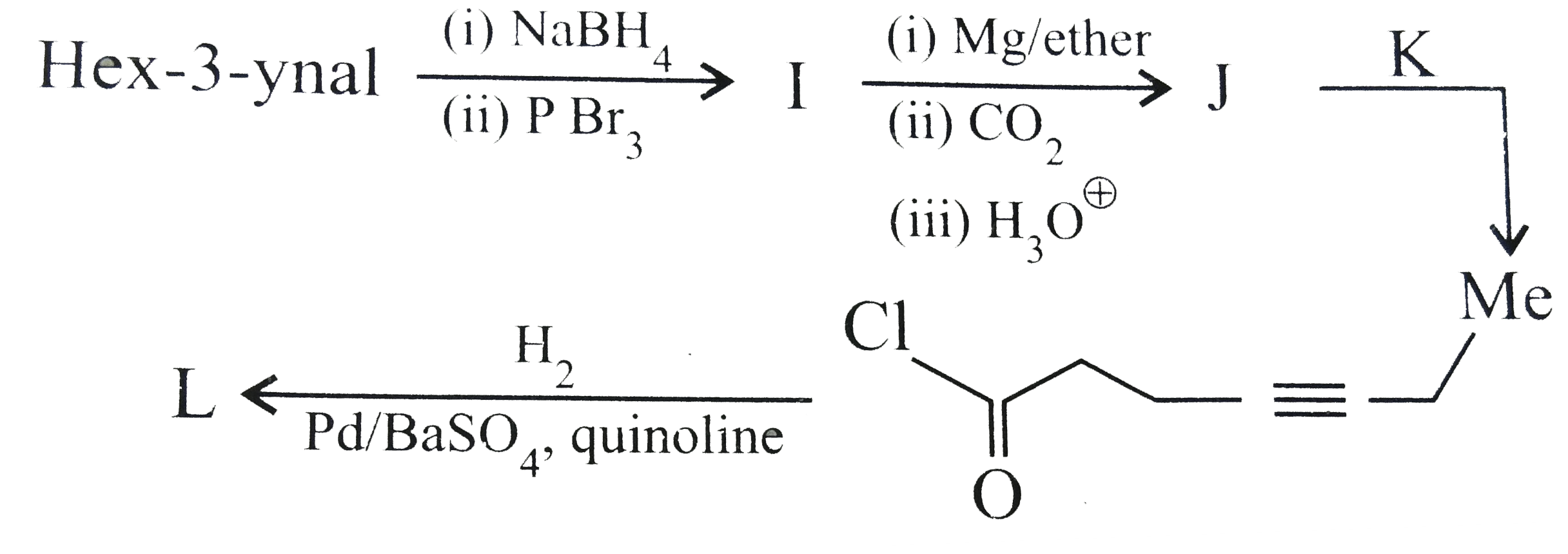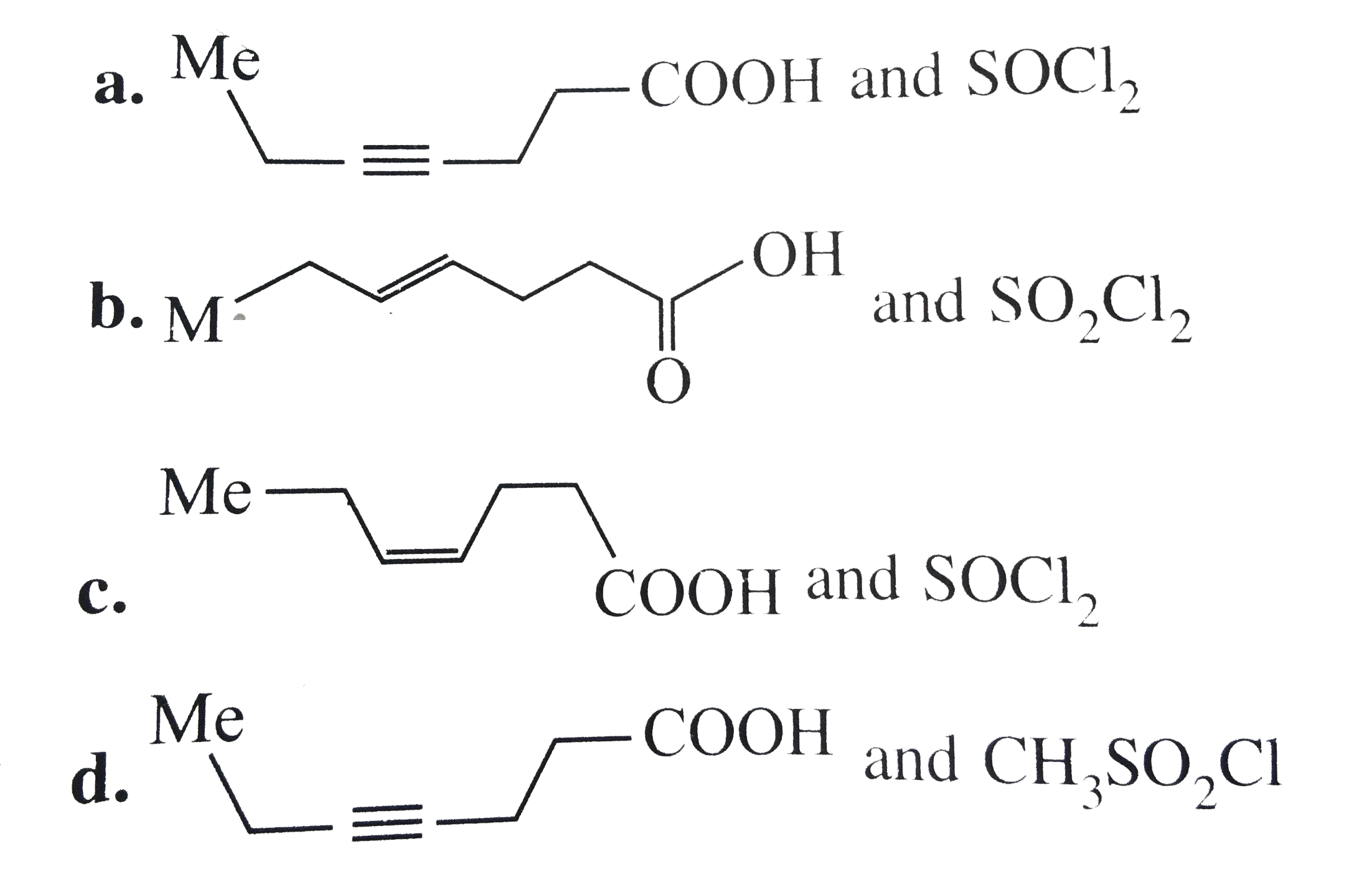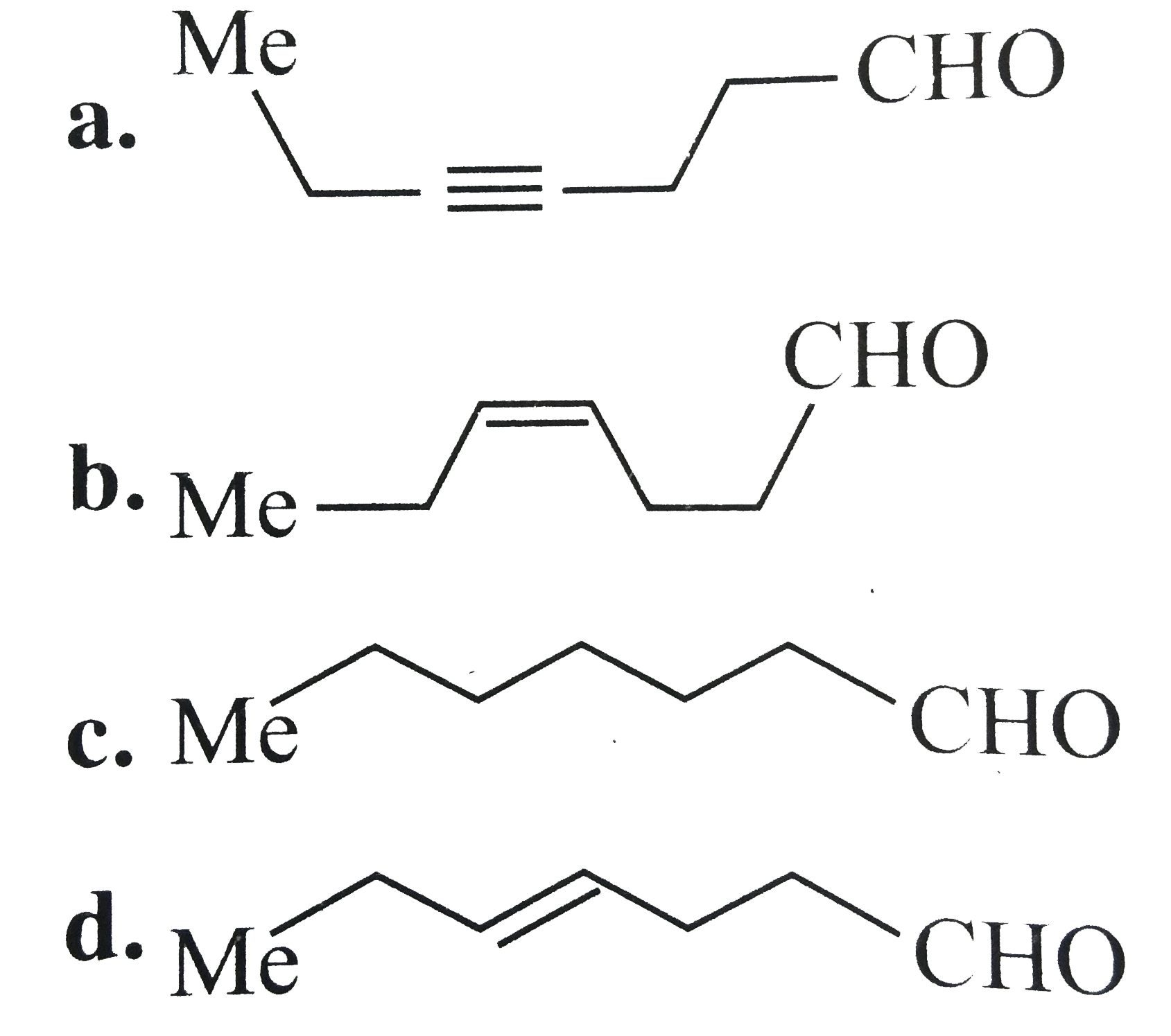Free enegry , G=H−TS, is state function that indicates whther a reaction is spontaneous or non-spontaneous. If you think of TS as the part of the system's enegry that is disordered already, then (H−TS) is the part of the system's energy that is still ordered and therefore free to cause spontaneous change by becoming disordered.
Also, ΔG=ΔH−TΔS From the second law of thermodynamics, a reaction is spontaneous if ΔtotalS is positive, non-spontaneous if ΔtotalS is negative, and at equilibrium if Δ'→talS is zero.
Since, −TΔS=ΔG and since ΔG and ΔS have opposite sings, we can restate the thermodynamic criterion for the spontaneity of a reaction carried out a constant temperature and pressure.
IF ΔG<0, the reaction is spontaneous.
If ΔG>0, the reaction is non-spontaneous.
If ΔG=0, the reaction is at equilibrium.
Read the above paragraph carefully and answer the following questions based on the above comprehension.
If an endothermic reaction is non-spontaneous at freezing point of water and becomes feasible at its boiling point, then
−ve
+ve
Zero
Nothing can be said
The correct Answer is:C
At ~1000∘C, since Zn and C have equal affinity for O2,ΔfGӨ of the reaction is zero.
ZnO+C→Zn+CO.
Topper's Solved these Questions
- BOOK - CENGAGE CHEMISTRY ENGLISHCHAPTER - GENERAL PRINCIPLES AND PROCESS OF ISOLATION OF ELEMENTSEXERCISE - Exs 1.1 (Subjective)25videos
GENERAL PRINCIPLES AND PROCESS OF ISOLATION OF ELEMENTS
- BOOK - CENGAGE CHEMISTRY ENGLISHCHAPTER - GENERAL PRINCIPLES AND PROCESS OF ISOLATION OF ELEMENTSEXERCISE - Exs 1.1 (Objective)14videos
GENERAL PRINCIPLES AND PROCESS OF ISOLATION OF ELEMENTS
- BOOK - CENGAGE CHEMISTRY ENGLISHCHAPTER - GENERAL PRINCIPLES AND PROCESS OF ISOLATION OF ELEMENTSEXERCISE - Archives (Subjective)14videos
GENERAL PRINCIPLES AND PROCESS OF ISOLATION OF ELEMENTS
- BOOK - CENGAGE CHEMISTRY ENGLISHCHAPTER - ELECTROCHEMISTRYEXERCISE - Archieves Subjective35videos
ELECTROCHEMISTRY
- BOOK - CENGAGE CHEMISTRY ENGLISHCHAPTER - GRIGNARD REAGENTS AND ORGANOMETALLIC REAGENTSEXERCISE - Exercises Archives (Linked Comprehension)1videos
GRIGNARD REAGENTS AND ORGANOMETALLIC REAGENTS
Similar Questions
Why is Fe an abundant element on earth, and why are the elements with higher atomic number increasingly rare ?
04:24View SolutionChoose the correct option :
(i) Gold is exracted using :02:56View SolutionWrite the chemical equations involved in the extraction of lead from galena by self-reduction process.
05:39View SolutionA current of 3.7 A is passed for 6hrs. Between Ni electrodes in 0.5 L of 2 M solution of Ni(NO3)2. What will be the molarity of solution at the end of electrolysis?
05:59View SolutionIn the following reaction sequence, products I, J, and L are formed. K represents a reagent.

The structures of product I is :

The structures of compounds J and K, respectively, are :

The structure of product L is :
 05:54View Solution
05:54View SolutionFree enegry , G = H - TS , is state function that indicates whther a reaction is spontaneous or non-spontaneous. If you think of TS as the part of the system's enegry that is disordered already, then (H -TS) is the part of the system's energy that is still ordered and therefore free to cause spontaneous change by becoming disordered. Also, DeltaG = DeltaH - T DeltaS From the second law of thermodynamics, a reaction is spontaneous if Delta_("total")S is positive, non-spontaneous if Delta_("total")S is negative, and at equilibrium if Delta_('total")S is zero. Since, -T DeltaS = DeltaG and since DeltaG and DeltaS have opposite sings, we can restate the thermodynamic criterion for the spontaneity of a reaction carried out a constant temperature and pressure. IF DeltaG lt 0 , the reaction is spontaneous. If DeltaG gt 0 , the reaction is non-spontaneous. If DeltaG = 0 , the reaction is at equilibrium. Read the above paragraph carefully and answer the following questions based on the above comprehension. For the spontaneity of a reaction, which statement is true?
View SolutionFree enegry , G=H−TS, is state function that indicates whther a reaction is spontaneous or non-spontaneous. If you think of TS as the part of the system's enegry that is disordered already, then (H−TS) is the part of the system's energy that is still ordered and therefore free to cause spontaneous change by becoming disordered.
Also, ΔG=ΔH−TΔS From the second law of thermodynamics, a reaction is spontaneous if ΔtotalS is positive, non-spontaneous if ΔtotalS is negative, and at equilibrium if Δ'→talS is zero.
Since, −TΔS=ΔG and since ΔG and ΔS have opposite sings, we can restate the thermodynamic criterion for the spontaneity of a reaction carried out a constant temperature and pressure.
IF ΔG<0, the reaction is spontaneous.
If ΔG>0, the reaction is non-spontaneous.
If ΔG=0, the reaction is at equilibrium.
Read the above paragraph carefully and answer the following questions based on the above comprehension.
A particular reaction has a negative value for the free energy change. Then at ordinary temperatureView SolutionFree enegry , G=H−TS, is state function that indicates whther a reaction is spontaneous or non-spontaneous. If you think of TS as the part of the system's enegry that is disordered already, then (H−TS) is the part of the system's energy that is still ordered and therefore free to cause spontaneous change by becoming disordered.
Also, ΔG=ΔH−TΔS From the second law of thermodynamics, a reaction is spontaneous if ΔtotalS is positive, non-spontaneous if ΔtotalS is negative, and at equilibrium if Δ'→talS is zero.
Since, −TΔS=ΔG and since ΔG and ΔS have opposite sings, we can restate the thermodynamic criterion for the spontaneity of a reaction carried out a constant temperature and pressure.
IF ΔG<0, the reaction is spontaneous.
If ΔG>0, the reaction is non-spontaneous.
If ΔG=0, the reaction is at equilibrium.
Read the above paragraph carefully and answer the following questions based on the above comprehension.
Which of the following is true for the reaction?
H2O(l)⇔H2O(g)at100∘C and 1 atmosphereView SolutionFree enegry , G = H - TS , is state function that indicates whther a reaction is spontaneous or non-spontaneous. If you think of TS as the part of the system's enegry that is disordered already, then (H -TS) is the part of the system's energy that is still ordered and therefore free to cause spontaneous change by becoming disordered. Also, DeltaG = DeltaH - T DeltaS From the second law of thermodynamics, a reaction is spontaneous if Delta_("total")S is positive, non-spontaneous if Delta_("total")S is negative, and at equilibrium if Delta_('total")S is zero. Since, -T DeltaS = DeltaG and since DeltaG and DeltaS have opposite sings, we can restate the thermodynamic criterion for the spontaneity of a reaction carried out a constant temperature and pressure. IF DeltaG lt 0 , the reaction is spontaneous. If DeltaG gt 0 , the reaction is non-spontaneous. If DeltaG = 0 , the reaction is at equilibrium. Read the above paragraph carefully and answer the following questions based on the above comprehension. If an endothermic reaction is non-spontaneous at freezing point of water and becomes feasible at its boiling point, then
06:42View SolutionFree enegry , G = H - TS , is state function that indicates whther a reaction is spontaneous or non-spontaneous. If you think of TS as the part of the system's enegry that is disordered already, then (H -TS) is the part of the system's energy that is still ordered and therefore free to cause spontaneous change by becoming disordered. Also, DeltaG = DeltaH - T DeltaS From the second law of thermodynamics, a reaction is spontaneous if Delta_("total")S is positive, non-spontaneous if Delta_("total")S is negative, and at equilibrium if Delta_('total")S is zero. Since, -T DeltaS = DeltaG and since DeltaG and DeltaS have opposite sings, we can restate the thermodynamic criterion for the spontaneity of a reaction carried out a constant temperature and pressure. IF DeltaG lt 0 , the reaction is spontaneous. If DeltaG gt 0 , the reaction is non-spontaneous. If DeltaG = 0 , the reaction is at equilibrium. Read the above paragraph carefully and answer the following questions based on the above comprehension. One mole of ice si converted to liquid at 273 K, H_(2)O(s) and H_(2)O(l) have entropies 38.20 and 60.03 J mol^(-1) dg^(-1) . Enthalpy change in the conversion will be
02:09View SolutionFree energy, G=H-TS, is a state function that includes whether a reaction is spontaneous or non-spontaneous. If you think of TS as the part of the system's energy that is disordered already, then (H-TS) is the part of the system's energy that is still ordered and therefore free to cause spontaneous change by becoming disordered.
Also, ΔG=ΔH−TΔS
To see what this equation for free energy change has to do with spontaneity let us return to relationship.
ΔStotal=ΔSsys+ΔSsurr=ΔS+ΔSsurr
(It is generally understood that symbols without subscript refer to the system not the surroundings.)
ΔSsurr=−ΔHT, where ΔH is the heat gained by then system at constant pressure.
ΔStotal=ΔS−ΔHT
⇒TΔHtotal=ΔH−TΔS
⇒−TΔStotal=ΔH−TΔS
i.e. ΔG=−TΔStotal
From second law of thermodynamics, a reaction is spontaneous if ΔStotal is positive, non-spontanous if ΔStotal is negative and at equilibrium if ΔStotal is zero.
Since, −TΔS=ΔG and since ΔG and ΔS have opposite signs, we can restate the thermodynamic criterion for the spontaneity of a reaction carried out at constant temperature and pressure.
If ΔG<0, the reaction is spontaneous.
If ΔG>0, the reaction is non-spontanous.
If ΔG=0, the reaction is at equilibrium.
In the equation, ΔG=ΔH−TΔS, temperature is a weighting factor that determine the relative importance of enthalpy contribution to ΔG.
Read the above paragraph carefully and answer the following questions based on above comprehension:
For the spontaneity of a reaction, which statement is true?02:10View SolutionFree energy, G=H-TS, is a state function that includes whether a reaction is spontaneous or non-spontaneous. If you think of TS as the part of the system's energy that is disordered already, then (H-TS) is the part of the system's energy that is still ordered and therefore free to cause spontaneous change by becoming disordered.
Also, ΔG=ΔH−TΔS
To see what this equation for free energy change has to do with spontaneity let us return to relationship.
ΔStotal=ΔSsys+ΔSsurr=ΔS+ΔSsurr
(It is generally understood that symbols without subscript refer to the system not the surroundings.)
ΔSsurr=−ΔHT, where ΔH is the heat gained by then system at constant pressure.
ΔStotal=ΔS−ΔHT
⇒TΔHtotal=ΔH−TΔS
⇒−TΔStotal=ΔH−TΔS
i.e. ΔG=−TΔStotal
From second law of thermodynamics, a reaction is spontaneous if ΔStotal is positive, non-spontanous if ΔStotal is negative and at equilibrium if ΔStotal is zero.
Since, −TΔS=ΔG and since ΔG and ΔS have opposite signs, we can restate the thermodynamic criterion for the spontaneity of a reaction carried out at constant temperature and pressure.
If ΔG<0, the reaction is spontaneous.
If ΔG>0, the reaction is non-spontanous.
If ΔG=0, the reaction is at equilibrium.
In the equation, ΔG=ΔH−TΔS, temperature is a weighting factor that determine the relative importance of enthalpy contribution to ΔG.
Read the above paragraph carefully and answer the following questions based on above comprehension:
A particular reaction has a negative value for the free energy change. Then at ordinary temperature.04:19View SolutionFree energy, G=H-TS, is a state function that includes whether a reaction is spontaneous or non-spontaneous. If you think of TS as the part of the system's energy that is disordered already, then (H-TS) is the part of the system's energy that is still ordered and therefore free to cause spontaneous change by becoming disordered.
Also, ΔG=ΔH−TΔS
To see what this equation for free energy change has to do with spontaneity let us return to relationship.
ΔStotal=ΔSsys+ΔSsurr=ΔS+ΔSsurr
(It is generally understood that symbols without subscript refer to the system not the surroundings.)
ΔSsurr=−ΔHT, where ΔH is the heat gained by then system at constant pressure.
ΔStotal=ΔS−ΔHT
⇒TΔHtotal=ΔH−TΔS
⇒−TΔStotal=ΔH−TΔS
i.e. ΔG=−TΔStotal
From second law of thermodynamics, a reaction is spontaneous if ΔStotal is positive, non-spontanous if ΔStotal is negative and at equilibrium if ΔStotal is zero.
Since, −TΔS=ΔG and since ΔG and ΔS have opposite signs, we can restate the thermodynamic criterion for the spontaneity of a reaction carried out at constant temperature and pressure.
If ΔG<0, the reaction is spontaneous.
If ΔG>0, the reaction is non-spontanous.
If ΔG=0, the reaction is at equilibrium.
In the equation, ΔG=ΔH−TΔS, temperature is a weighting factor that determine the relative importance of enthalpy contribution to ΔG.
Read the above paragraph carefully and answer the following questions based on above comprehension:
Which of the following is true for the reaction?
H2O(l)<⇒H2O(g) at 100∘ C and 1 atmosphere?03:27View SolutionFree energy, G=H-TS, is a state function that includes whether a reaction is spontaneous or non-spontaneous. If you think of TS as the part of the system's energy that is disordered already, then (H-TS) is the part of the system's energy that is still ordered and therefore free to cause spontaneous change by becoming disordered.
Also, ΔG=ΔH−TΔS
To see what this equation for free energy change has to do with spontaneity let us return to relationship.
ΔStotal=ΔSsys+ΔSsurr=ΔS+ΔSsurr
(It is generally understood that symbols without subscript refer to the system not the surroundings.)
ΔSsurr=−ΔHT, where ΔH is the heat gained by then system at constant pressure.
ΔStotal=ΔS−ΔHT
⇒TΔHtotal=ΔH−TΔS
⇒−TΔStotal=ΔH−TΔS
i.e. ΔG=−TΔStotal
From second law of thermodynamics, a reaction is spontaneous if ΔStotal is positive, non-spontanous if ΔStotal is negative and at equilibrium if ΔStotal is zero.
Since, −TΔS=ΔG and since ΔG and ΔS have opposite signs, we can restate the thermodynamic criterion for the spontaneity of a reaction carried out at constant temperature and pressure.
If ΔG<0, the reaction is spontaneous.
If ΔG>0, the reaction is non-spontanous.
If ΔG=0, the reaction is at equilibrium.
In the equation, ΔG=ΔH−TΔS, temperature is a weighting factor that determine the relative importance of enthalpy contribution to ΔG.
Read the above paragraph carefully and answer the following questions based on above comprehension:
If an endothermic reaction is non-spontaneous at freezing point of water and becomes feasible at its boiling point, then02:11View SolutionFree enegry , G=H−TS, is state function that indicates whther a reaction is spontaneous or non-spontaneous. If you think of TS as the part of the system's enegry that is disordered already, then (H−TS) is the part of the system's energy that is still ordered and therefore free to cause spontaneous change by becoming disordered.
Also, ΔG=ΔH−TΔS From the second law of thermodynamics, a reaction is spontaneous if ΔtotalS is positive, non-spontaneous if ΔtotalS is negative, and at equilibrium if Δ'→talS is zero.
Since, −TΔS=ΔG and since ΔG and ΔS have opposite sings, we can restate the thermodynamic criterion for the spontaneity of a reaction carried out a constant temperature and pressure.
IF ΔG<0, the reaction is spontaneous.
If ΔG>0, the reaction is non-spontaneous.
If ΔG=0, the reaction is at equilibrium.
Read the above paragraph carefully and answer the following questions based on the above comprehension.
For the spontaneity of a reaction, which statement is true?05:04View SolutionFree enegry , G=H−TS, is state function that indicates whther a reaction is spontaneous or non-spontaneous. If you think of TS as the part of the system's enegry that is disordered already, then (H−TS) is the part of the system's energy that is still ordered and therefore free to cause spontaneous change by becoming disordered.
Also, ΔG=ΔH−TΔS From the second law of thermodynamics, a reaction is spontaneous if ΔtotalS is positive, non-spontaneous if ΔtotalS is negative, and at equilibrium if Δ'→talS is zero.
Since, −TΔS=ΔG and since ΔG and ΔS have opposite sings, we can restate the thermodynamic criterion for the spontaneity of a reaction carried out a constant temperature and pressure.
IF ΔG<0, the reaction is spontaneous.
If ΔG>0, the reaction is non-spontaneous.
If ΔG=0, the reaction is at equilibrium.
Read the above paragraph carefully and answer the following questions based on the above comprehension.
A particular reaction has a negative value for the free energy change. Then at ordinary temperature02:59View Solution

